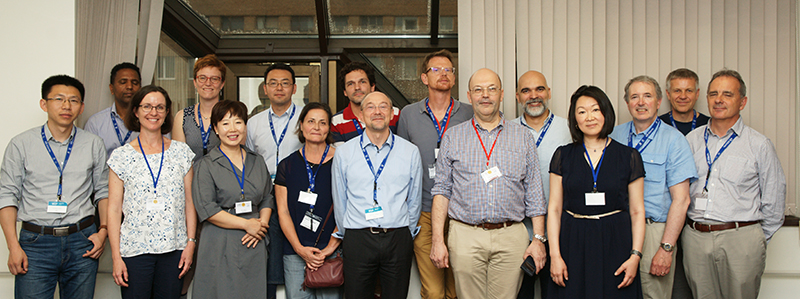The 21st Session of the WCRP Working Group on Subseasonal to Interdecadal Prediction (WGSIP) was held at the Institute of Numerical Mathematics (INM) of the Russian Academy of Science (RAS) in Moscow, Russia, from 29-31 May 2019.
The new WCRP Strategic Plan, in particular, Objective 2, provided a solid framework for developing new candidate projects for WGSIP. A significant portion of the session was devoted to discussing initial ideas which resulted in the following streams:
- Prediction capability (monsoons, ocean)
- Extremes (unprecedented events, risks, and compounds events)
- Information for decision making (calibration, seamlessness, capacity building)
Highlights of the remaining part of the WGSIP21 agenda included a review of progress on sub-projects initiated 4 years ago (teleconnections, snow initialization (SNOWGLACE), and shocks and drifts), updates from modeling centers, linkages to operations and services via WMO and other related initiatives.
The session was held in conjunction with the International Young Scientists School (27-31 May) and followed by CITES-2019 (3-6 June 2019), jointly organized with the International Center for Theoretical Physics (ICTP) and attended by over 50 students.

The central theme of the School was subseasonal to decadal (S2D) weather and climate predictions and it covered aspects from modeling and data assimilation to forecast information delivery and relevant practical applications.
The accuracy of S2D predictions has improved significantly over the last years, exploiting potential sources of atmosphere predictability, such as interactions of the atmosphere with the ocean, sea-ice, land surface, and internal atmosphere modes of variability such as the Madden–Julian Oscillation (MJO) and the Quasi-Biennial Oscillation (QBO). The School ran for a whole week, with lectures given by leading experts from WGSIP, introducing systems from some of the world’s leading operational centers. The lectures were complemented by lab exercises using open-access data of near-real-time and historical forecasts.
The second week featured the Computational Information Technologies for Environmental Sciences Conference (CITES) devoted to different aspects of Earth system modelling, long-range forecasts, and applications.
The lectures at the school were given by specialists in the area of climate variability and prediction, members of WGSIP, World Meteorological Organization Expert Team on Operational Predictions from Sub-seasonal to Longer-time Scales (ET-OPSLS), and CCl/CBS WMO Inter-Programme Expert Team on Regional Climate Activities.
The conference welcomed contributions on Earth system model components development, in particular, atmosphere, ocean and land surface processes model development (including dynamical cores development), representation of uncertainties in initial data and models, data and informational systems for Earth sciences. Also of interest were regional transdisciplinary applied topics covered by the Future Earth Program and its Northern Eurasia Future Initiative subproject.

